The older adult female and male carpenter bees who created the nest will die during the summer after the larvae are laid. Carpenter bee sprays can be applied on and around the holes in the wood and is effective on newer intrusions.
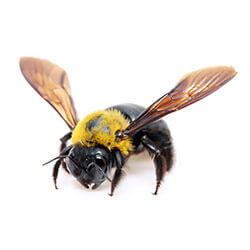
Carpenter Bees Facts Identification Control Prevention
Carpenter bees are not active year-round.
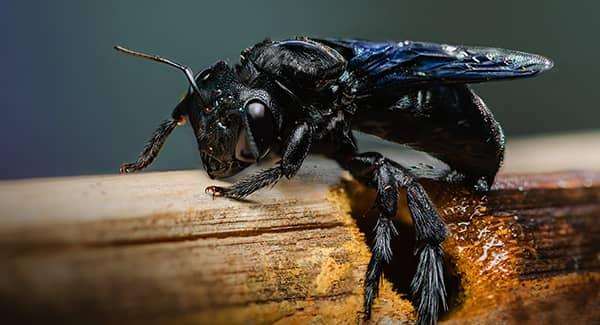
When do carpenter bees hatch. The female carpenter bee excavates a tunnel for her offspring. In late summer theyll emerge as adults and spend the remainder of the year hunting for pollen. In late autumn new carpenter bees come out of the holes.
As fall turns to winter both males and females will hibernate till the following spring. Survivors emerge in April and May to mate. They hang around eating pollen and nectar then climb back into the tunnel to sleep through the winter.
They stay in the log for 5 to 7 weeks. Where Do Carpenter Bees Live. When warmer temperatures arrive both male and female bees will exit their state of hibernation and go into mating.
Special Adaptations and Defenses. Carpenter bees usually live for about one year. Soon after being laid theyll hatch and feed on pollen for a month or two before pupating to adults.
Once shes laid her eggs she puts a ball of pollen and regurgitated nectar inside the cell and blocks the entrance with wood pulp. The workers emerge after 21 days. Each new generation is hatched in the late summer emerging from nests in August and September to grow and feed pollinating flowers as they go before settling in for the winter and hibernating.
Larvae typically hatch in August to feed on nearby nectar before returning to their tunnels for winter. In the extreme southern states like FL LA etc we routinely see a lot of. Eggs hatch within a few days and the young larvae feed on the cache left by the mother.
As they visit flowers and feed on nectar they pick up and transfer pollen. This is not intended. During the winter months carpenter bees go into hibernation.
Workers are capped 9 days after they are layed. At the onset of summer these eggs are laid and will hatch a short time later in early fall. Come winter those new young carpenter bees that hatched in late summer will return to their nests to hibernate for the winter.
A few days later the evil new bees hatch and start to grow up eating the pollen. Now whether or not pupae hatch in late summer early fall or the following spring will depend largely on where you reside. Spray insecticide more heavily in early spring to prevent infestation and then treat regularly throughout the summer.
Some people consider carpenter bees pests because they drill holes or nest in wooden structures. Within a period of five to seven weeks depending on environmental conditions the bee pupates and reaches adulthood. How Much Damage Do Carpenter Bees Actually Do.
The new adult generation emerges in late summer to feed on nectar before settling in for the winter. They will find an old tunnel to hole up in until the Spring. Like other native bees carpenter bees are important pollinators in native plant communities gardens and in some crops.
Hibernating during the winter the bees emerge from their nests in the spring. The eggs hatch in around a week and the offspring will feed on the food left for them until they are ready to leave which is usually around 7 weeks later. After mating the male Carpenter dies and the female begins to expand the nest in order to make room for the new addition.
The eggs hatch at 3 days after they are layed. Carpenter bees are large black and yellow bees frequently seen in spring hovering around the eaves of a house or the underside of a deck or porch railThey are often mistaken for bumble bees but differ in that they have a black shiny tail sectionThe carpenter bee is so-called because of its habit of excavating tunnels in wood with its strong jaws. Carpenter bees love to make homes in windowsills doors roof eaves shingles railings telephone poles and even wooden lawn furniture.
Insecticidal dust can be applied more deeply into the wood and is ideal for longer-term infestations.

Where Do Carpenter Bees Go In The Winter Best Bee Brothers
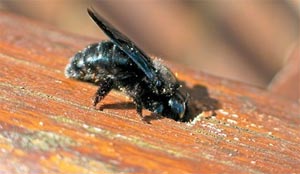
Things To Know About Carpenter Bees

Lifecycle Of A Carpenter Bee Best Bee Brothers

What Do Carpenter Bee Nests Look Like

Things To Know About Carpenter Bees

Life Cycle Of A Carpenter Bee With Some Extra Reliable Information
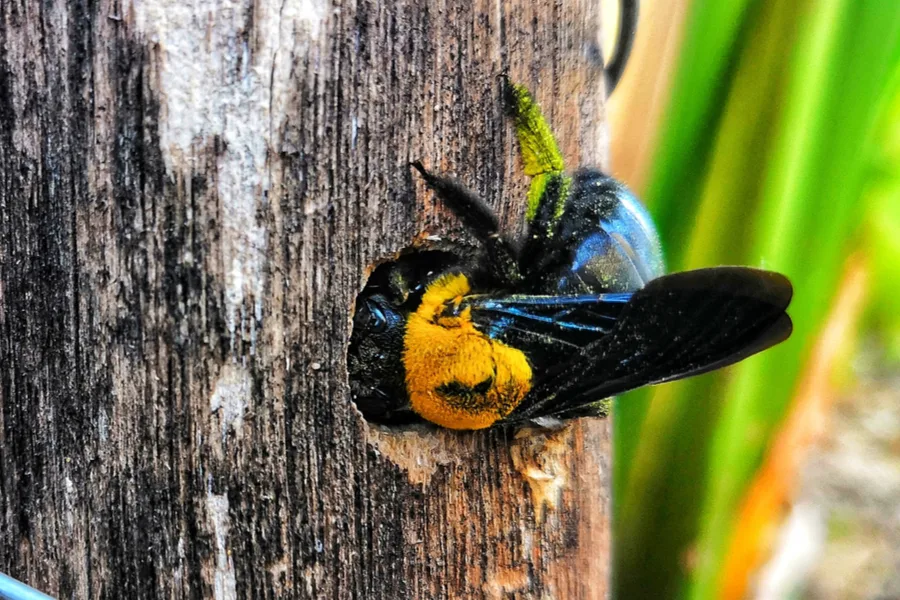
How To Stop Carpenter Bees Naturally 5 Simple Methods That Work

Carpenter Bee Control Dave S Garden
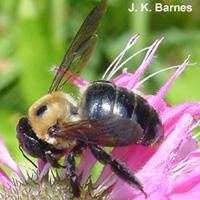
Carpenter Bees Nc State Extension Publications
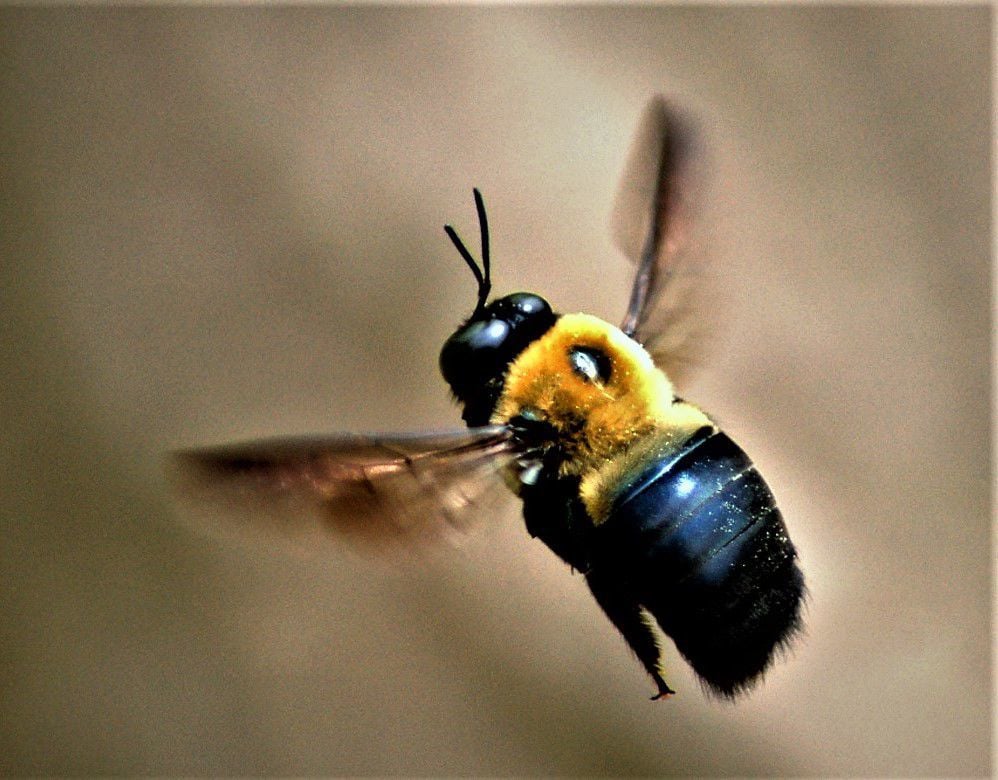
Carpenter Bees Fear Not Stings Bore Holes Are The Problem Local Sports Paducahsun Com
Male Vs Female Carpenter Bees What S The Difference Best Bee Brothers

Carpenter Bees Drill Holes Lay Eggs In Wooden Structures Caes Newswire
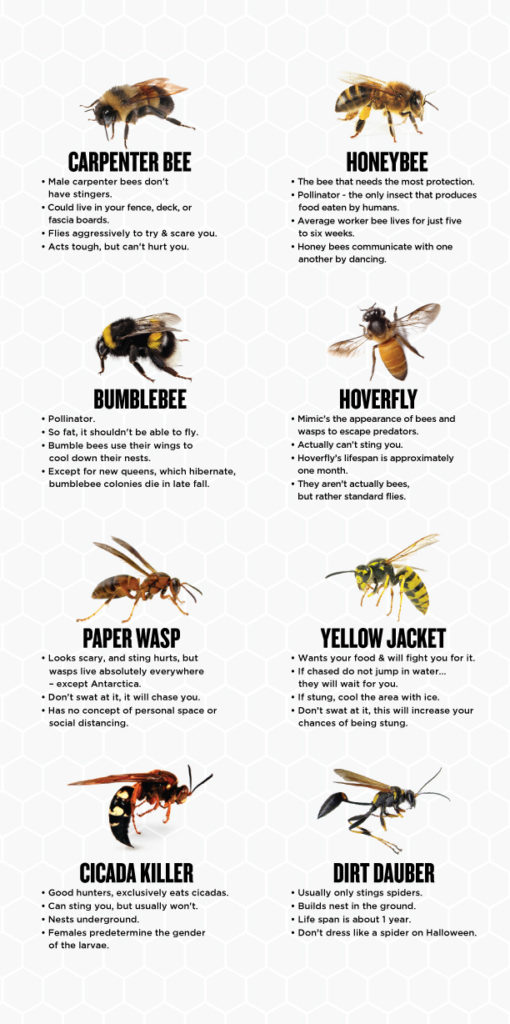
Carpenter Bees In New Jersey Solutions Viking Pest Control

Carpenter Bees Vs Bumble Bees Proactive Pest Management
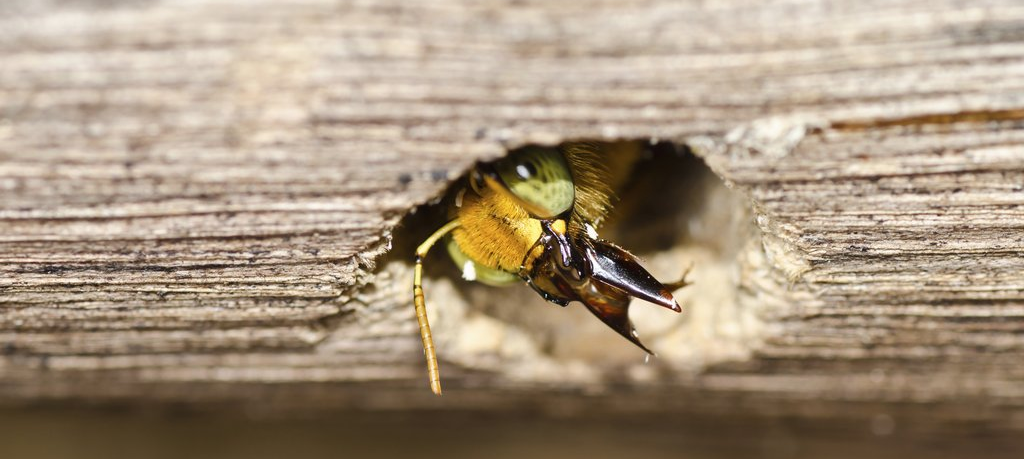
A Natural Approach To Preventing Carpenter Bees Robi Decking

How Do Carpenter Bees Affect Us Acme Pest Control Blog




